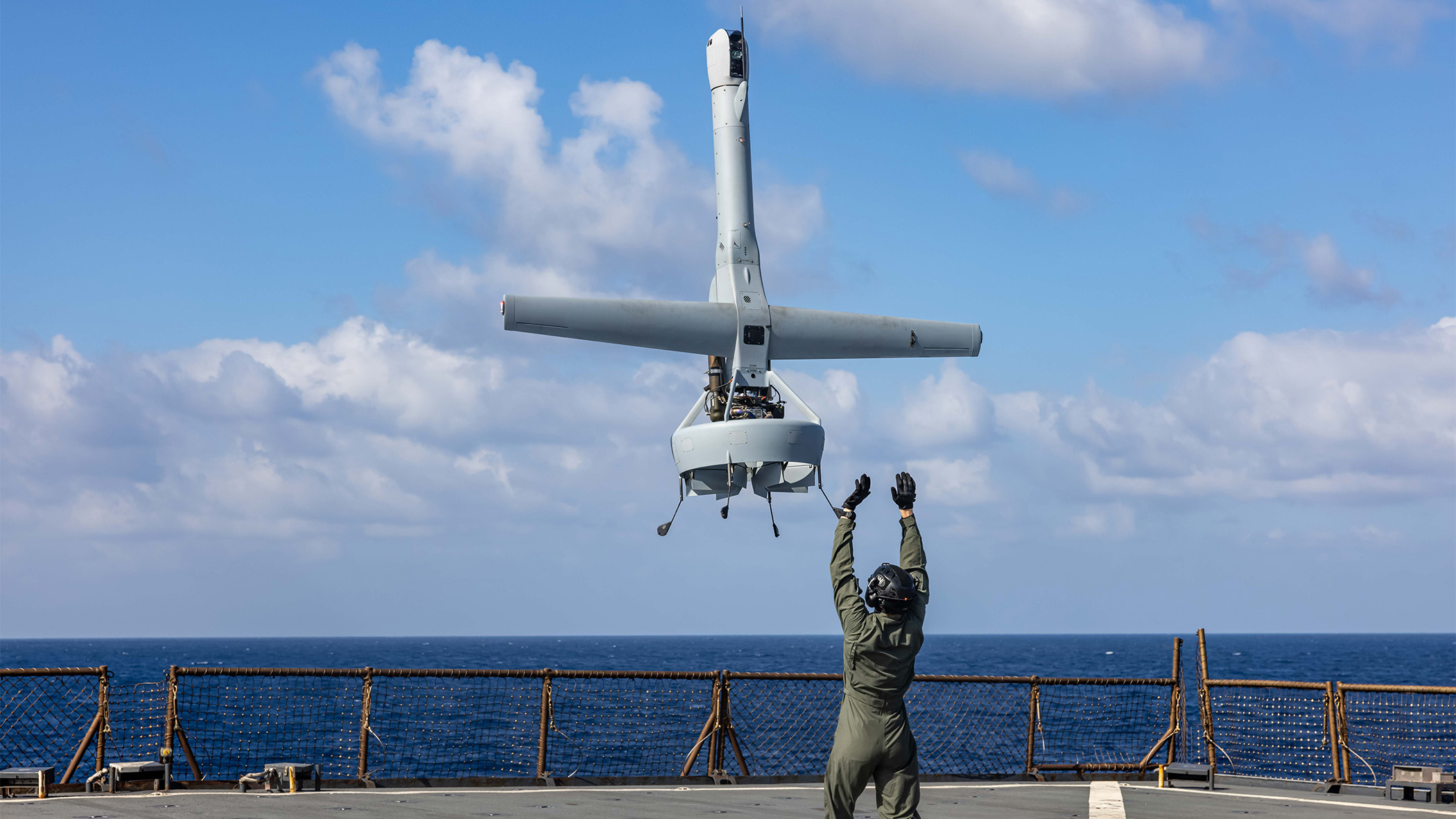The Navy hasn’t seen this kind of prolonged conflict in decades. Houthi rebels in Yemen continue to send drones and fire anti-ship missiles at Navy ships and commercial vessels in the Red Sea and the Gulf of Aden.
Programmers at the Naval Surface Warfare Center in Dam Neck, Virginia watch the fighting. They have been constantly updating the software for the defensive weapons for Norfolk-based ships like the amphibious assault ship the USS Bataan and the aircraft carrier USS Eisenhower.
Weapons like the Close-In Weapon System (CIWS) hadn’t been involved in combat on this scale, until October, when war broke out in Gaza and Houthi rebels in Yemen began disrupting international trade in the region. The CIWS (pronounced Sea Wiz) is essentially a computer-assisted Gatling gun. It has been around since the 1970s.
Tim Bentjen has worked on programming these types of systems for 30 years. He says he’s proud and a little relieved.
“It works, right? Everything that we've done, all the systems that we've designed, that we've installed on, that we maintain on the ship, they work, they're protecting the sailors,” Bentjen said.
Bentjen is head of the Combat Systems Readiness Division at the Naval Surface Warfare Center. A number of Norfolk-based ships have been caught up in the recent conflict. The USS Bataan deployed in July to the Red Sea and was stationed near Israel with the USS Carter Hall and USS Mesa Verde until the ships were called home this week.
“So we're seeing real time events and we're feeding that feedback right into our development pipeline to where we can actually make improvements to make the systems work even better,” he said.
Bentjen’s team is now in daily contact with the ships in the region over the Navy’s secure internet. Sailors alert the software team in the US to changes in their tactics, as the U.S. adjusts its strategy as it tries to keep commercial shipping lanes open.
There have been well over 150 attacks on US ships since October, mostly drones and anti-ship missiles. Navy leaders have called this sustained conflict the worst since World War II.
“When you're talking about anti-ship missiles, you're talking seconds of reaction time. So software plays a key role in that, the detection of a threat and neutralizing the threat within a matter of seconds,“ Bentjen said.
The U.S. stepped up its effort to protect international shipping in the region after war broke out in Gaza in October. Wes Rumbaugh, with The Center for Strategic and International Studies, looked at how long the U.S. can keep up this kind of warfare.
“It's been sort of a popular trope that the Navy is shooting $2 million or $2.5 million interceptors at, $300,000 or $200,000 drones,” he said.
That may look unsustainable, but roughly 11 percent of global trade moves through the region. If the conflict convinced commercial ships to avoid the area, it would have a global economic impact, Rumbaugh said.
“What air defense does is it buys you time to be able to find other solutions to the end of a conflict. You're not going to generally exhaust the other country,” he said.
The US also has to consider the cost of losing a multi-billion dollar warship, he said.
The destroyer USS Gravely used its CIWS to shoot down an anti-ship missile fired from Yemen in February. The large, computer-guided Gatling guns shoot up to 4,500 shots a minute. Bentjen, who works with the same systems, said the Navy wasn’t trying to save money. Using the CIWS to shoot down a missile is certainly cheap and effective, but there is little room for error.
“With those missiles, you're talking like if you can see it, you've got a second or two, right. It’s that close. So that's the scary piece,” he said.
For years, the Navy has been working on high energy lasers and high powered microwaves which would be cheaper than firing missiles. So far the Navy hasn’t put any of those options to the test in the Red Sea. In the meantime, the team in Virginia is looking at ways to make software upgrades even faster, as the Navy tries to adapt to a new threat in real time.





